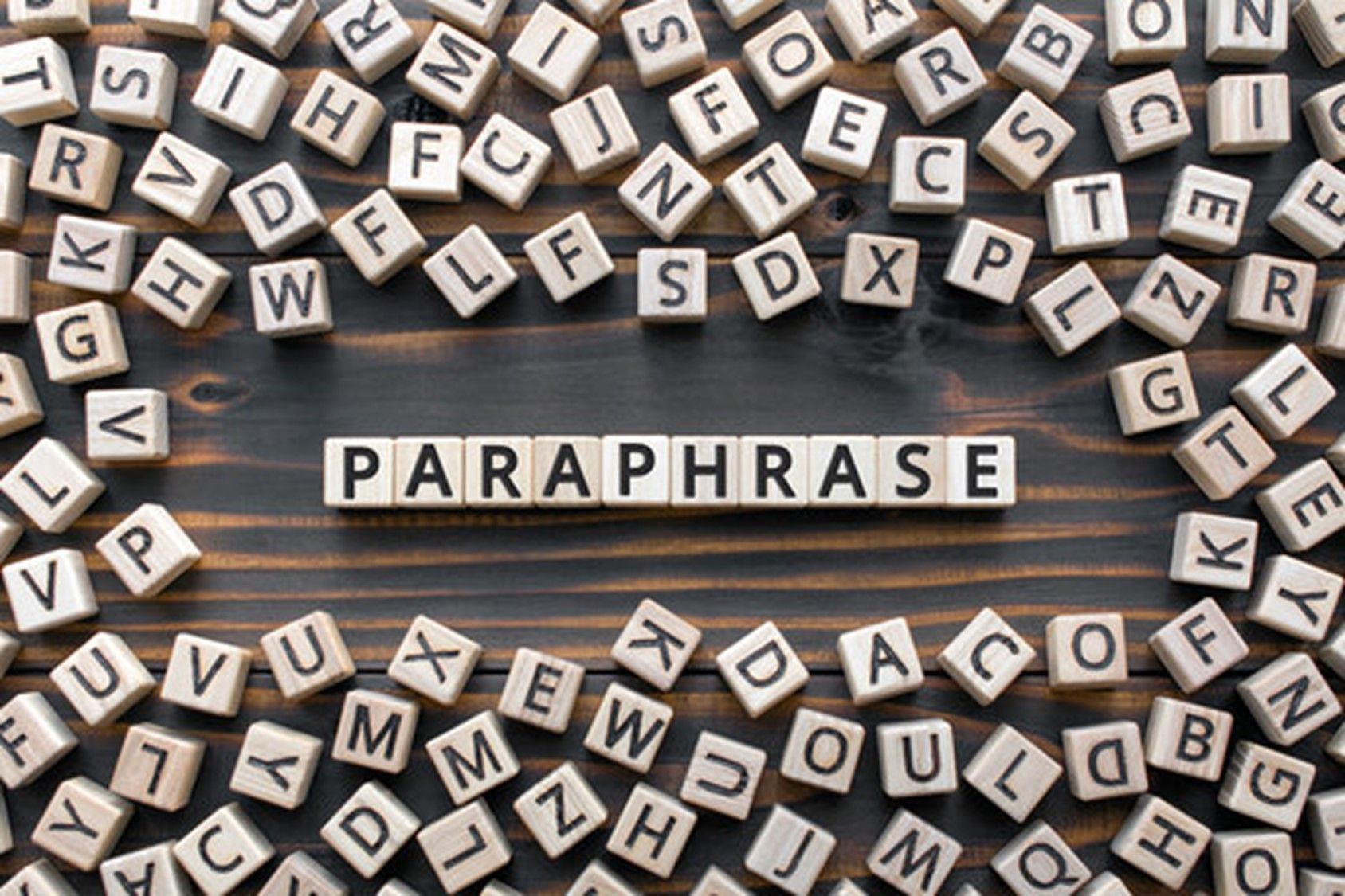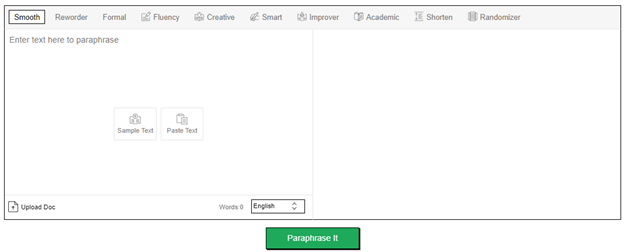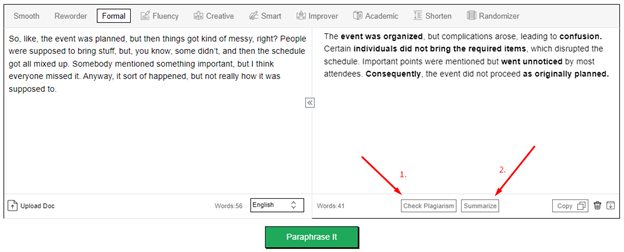Be Different Be Smart Be a Paraphraser
written by: Krystof-Sandor Harfst
Table of Content

What does it mean to be a paraphraser? Does it mean to restructure everything you see? Or does it mean to spark clarity in the readers' minds at the first glance? Definitely the latter.
Paraphrasing is a classic writing technique that involves making words and sentences a bit different to make them fresh, unique, and interesting to read. However, the original meaning must stay intact.
Being a smart paraphraser isn’t an easy job. That’s why we came up with this post to help you out on your writing ventures. Consequently, you’ll produce compelling pieces for audiences in every corner of the world, making your name in the industry.
Techniques to Paraphrase Content
Below, we’ve written all the steps necessary to make your content new and different from others. Follow along closely to not miss out on anything.
Convert From Passive To Active Voice
Converting from passive to active voice is necessary to have clarity in words. It ascertains your message to the readers, making it easier for you to connect with people.
To convert from passive to active voice, identify the subject, object, and verb of the sentence.
| Passive Voice | Sentence Type | Order of SVO |
|---|---|---|
| The bakery was built by John. | Object + Verb + Subject | |
| Active Voice | John built the bakery | Subject + Verb + Object |
In the above example, John is the subject, dictating what happens to everything else. Bakery is the object, on which the action is performed. While ‘built’ is the action being performed.
By analyzing the SVO arrangement of your sentences, you can place them in the correct order to achieve clarity.
So, if your subject is at the end, shuffle the order to have it at the start of the sentence, followed by the verb, and finally, the object.
But still, if you are facing any hurdles in performing the conversion, then a preferable option will be an online passive to active voice converter. The tool will automatically change the input sentence from passive to active and vice versa with a single click.
1. Synonymize When Possible
Synonymizing means using similar-meaning words to either remove word redundancies or tone down industry-coded jargon.
Using synonyms can make text easily understandable, making your content worthy of praise. The main key to synonymizing intelligently is to comprehend the context in which the word is utilized.
For instance, the word ‘striking’ can have two types of meanings. One is the literal meaning, which is to hit something with extreme force. The other is the implicit meaning, which is to stand out from others.
If ‘striking’ is used for literal means, a better word can be ‘pounding’, ‘beating’, or even ‘colliding.’
However, if it’s used in implicit terms, then the list of synonyms can change to something like, ‘evident’, ‘noticeable’, and so on.
Thus, you have to decide when to synonymize, without breaking the context of your work. Improve readability and word diversity in the process to make the content look fresh and polished.
2. Adjust The Writing Tone
If you want to be a paraphraser, you need to adjust your writing tone to a singular option. For example, you can’t write half a letter with an academic (formal) tone and then switch to a casual talking option (informal.)
Not only will it look weird, but also highly unprofessional. Thus, to avoid such mishaps, we’ll teach you to maintain tonal consistency in your work.
Let’s consider a scenario where you have to submit a thesis to your academic supervisor. The tone must be highly formal; meaning that you can’t use any slang, word contractions, or even casual dialogue.
Similarly, if you’re writing to people at your knowledge level, peers, friends, etc. You don’t need to be overly formal as it would look out of place. You’re free to use contractions, idioms, and even rhetorical expressions to make things interesting.
That’s why understanding the audience is so important to adapt the right writing tone and stick to it.
3. Change The Word Forms
While changing sentences and words, it’s common to leave out words in their gibberish forms.
| Word forms | |
|---|---|
| I like to get help from my father in my studies. | ✅ |
| My father is very helpful in my studies. | ✅ |
Both of the above sentences are correct. However, if we changed sentences 1 to 2 without changing the word ‘help’ to ‘helpful’, then it would be a problem.
Look to combine all the other techniques we mentioned above to be a different, smart, and intelligent paraphraser for your content. Also, look to combine and splice up sentences according to their length to improve the reading rhythm of the content.
Pro Tip: If a sentence is 20 words or longer, try to find ways to cut it down into two. Similarly, avoid run-on sentences by combining two or more sentences (recall the SVO criteria we mentioned earlier.)
Following our tips, your work will sound clearer and look more polished and professional to your audience.
A Smarter Way?
What if we told you that there’s an even smarter way to do everything we mentioned above?
That is to utilize an AI paraphraser that can automate the paraphrasing process for your convenience and provide reliable results. Not sure how to choose one and use it? Don’t worry, we got you covered!
1. Choose A Solid AI Paraphraser
Today, online paraphrasers are becoming stronger in their functionalities. Most of them utilize advanced NLP algorithms that can synonymize and restructure sentences perfectly according to the context of the input.
Yet, many options either require a huge sum to function, or tiring sign-in/sign-up procedures that waste time and effort.
Thus, to save you from tireless research, we came up with a paraphrase tool that is free, quick, and has a sleek UI.

The Editpad’s paraphraser runs on the latest AI model to bring clarity and readability to your content. It also has multiple tone options to adjust text according to your audience type.
2. Input The Content To Be Changed
To use this tool, simply copy-paste text in the tool’s interface. Or upload a file directly from your device’s default directory.
For a worked demonstration, below is one portion of the content that we’re hoping to improve in terms of coherence, clarity, and tone.
Input:
“So, like, the event was planned, but then things got kind of messy, right? People were supposed to bring stuff, but, you know, some didn’t, and then the schedule got all mixed up. Somebody mentioned something important, but I think everyone missed it. Anyway, it sort of happened, but not really how it was supposed to.”
The above text is just messy. It isn’t communicating the issue, which can make the reader pull their hair out!
So, we would want the paraphrase tool to make this text in active voice, academic tone, and easier to understand. Let’s see what we get.
3. Adjust The Required Tone
To adjust the tone, simply click on the tab options in the tool (refer to the image in sub-section 1.) As mentioned above, we’ll use a formal tone for restructuring our content and see if the paraphrasing tool can automate this process, successfully.

Output:
“The event was organized, but complications arose, leading to confusion. Certain individuals did not bring the required items, which disrupted the schedule. Important points were mentioned but went unnoticed by most attendees. Consequently, the event did not proceed as originally planned.”
Sure enough, we’ve got a brand-new output that looks fresh, coherent, and easier to read and understand. The tone also matches the formal requirement, deeming this tool reliable to use for your paraphrasing needs.
Do notice that the word count has significantly dropped in the resulting text. That is because the paraphrasing tool removed slang like ‘sorta’, ‘kinda’, etc. – things that aren’t allowed in formal language.
4. Extract The Output
Finally, to extract the paraphrased version, use the ‘copy’ or ‘download’ button in the bottom-right corner of the tool.
However, the paraphraser downloads files with .doc extensions. So, make sure that you have a valid word-processing software installed on your device to see and access the results.
Towards the end of the tool’s interface, you see two options: ‘Check Plagiarism’, and ‘Summarize.’

Click on button number 1 to ensure that what you’ve written is unique and different from others. Or press the second button to make content concise according to your needs and preferences.
With this step, our process of finding and using a reliable AI paraphraser online comes to an end.
Final Words
To be a smart paraphraser one has to restructure the content differently but with the same meaning. Using paraphrasing techniques, you can make your content new, original, and enjoyable for readers, attracting a mass audience.
Methods like the conversion of passive voice to active voice, use of synonyms, and regulation of the writing tone can make a huge difference in the quality of writing.
However, an AI paraphraser tool can help in successfully automating these processes, guaranteeing that the copy is clear, coherent, and readable.



Topics
Popular Blog Posts
Free Language Course
Language learning apps
Online language learning
Intro
Discount preply
Cheap preply
Busuu
Busuu app
Is Busuu free
Free4Talk
Think In Italian
Babbel app
Is Babbel free?
Babbel cost
Babbel Spanish
Babbel vs. Rosetta Stone
Duolingo
Duolingo English test
How much is Duolingo plus
Rosetta Stone
Rosetta Stone languages
Rocket Languages



